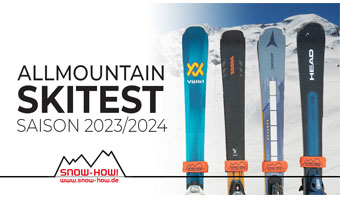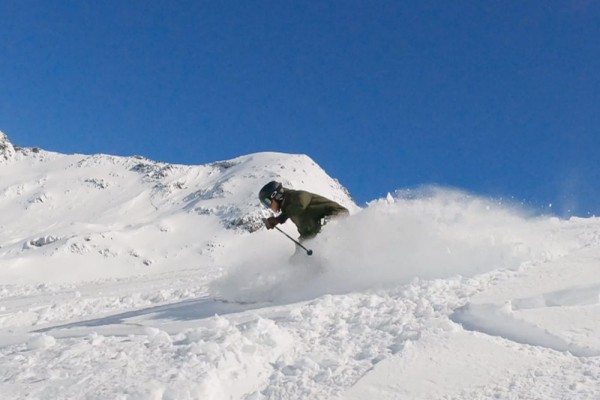An all-mountain ski is a ski that literally equips you well for everything the mountain has to offer.
1. Who is an allmountain ski suitable for?
2. What are the characteristics of an allmountain ski?
3. In what length should you ski an allmountain ski?
4. Allmountain skis for women
5. Allmountain skis in ski tests
6. Allmountain skis - summary
7. Other ski categories
________
1. Who is an allmountain ski suitable for?
The allmountain ski is particularly suitable for skiers who do not want to commit to any particular type of terrain or skiing style and want to be equipped for all conditions with one pair of skis. A generalist for generalists, so-called. Skiers who are mainly skiing during Easter and later in the winter and therefore have to expect to be confronted with muddy and churned-up slopes more often might also appreciate the allmountain ski.
The allmountain ski is one for everything, but not necessarily one for everyone. Of course, the generalist can hardly hold a candle to the specialists in their respective fields: A slalom ski is certainly more agile, a racecarver even more aggressive, and a freeride ski floats even better in deep snow. And beginners and inexperienced skiers will certainly have an easier time with an allround carver.
But for advanced to good skiers who want to be equipped good for all styles, not necessarily perfect for one, the allmountain ski is a good, maybe perfect mix.
2. What are the characteristics of an allmountain ski?
The main feature of the allmountain ski is its versatility and this is also reflected in its construction. Basically, the allmountain ski is an attempt to combine the advantages of the race carver with those of the freeride ski.
And you can see that at first glance: The center width of the allmountain ski varies between 80 and 95 millimeters, depending on the model, and the radius roughly corresponds to that of a racecarver. Due to the higher width compared to the racecarver and also due to the more pronounced rocker, the allmountain ski has more lift in deep snow and sulz, but can be carved much better and safer on the hard slope than the again significantly wider and more rockered freeride ski.
3. In which length should you ski the allmountain ski?
Since the allmountain ski is comparatively easy to turn thanks to its pronounced rocker and the lift in deep snow depends primarily on the size of the surface over which the weight is distributed, it is neither necessary nor sensible to ski it too short. It's best to choose a length that roughly corresponds to your height. Up to ten centimeters less is still within reason.
4. Allmountain skis for women
Even though there is of course nothing to prevent women from also driving the men's (or unisex) race carvers, there are good reasons why female skiers should rather look around for the models developed especially for women.
Women's and men's skis differ not only in weight and design, they also differ in their handling characteristics. Women's body center of gravity is usually further towards the hips than men's, and since skiing is mainly about shifting the body center of gravity at the right moment, conventional skis do not always make it easy for women to initiate the turn. That's why women's skis are usually designed with the body's center of gravity further forward to make it easier to turn in.
5. Allmountain skis in ski tests
Here you can find an allmountain ski test:

6. Allmountain skis - summary
| area of use | all mountain |
| target group | good to experienced skier; generalist |
| characteristics | medium width and rocker between racecarver and freeride ski |
| recommended length | height |
7. Other ski categories
You are not interested in deep snow and are looking for a specialist for the groomed slopes? Then you should take a look at our racecarvers, slalomcarvers or sport carvers!
Or, on the contrary, do you want nothing more than to get off the slopes and into the powder? Then our freeride skis might be just the thing for you!




